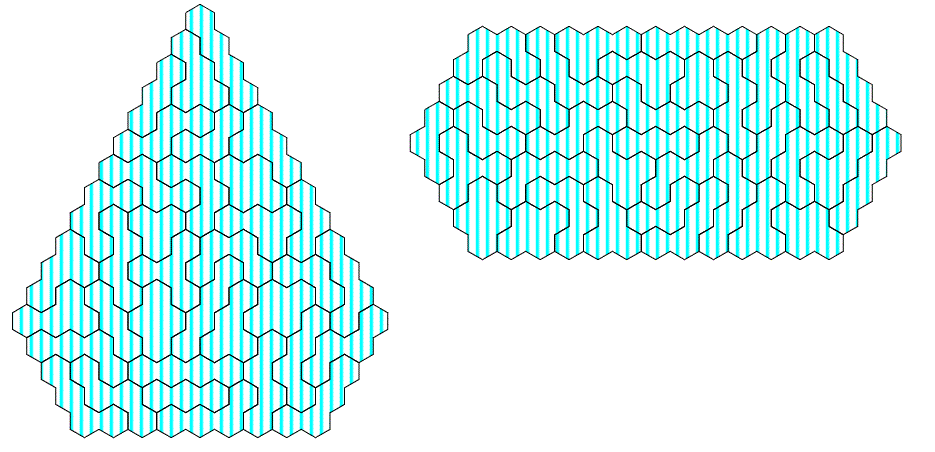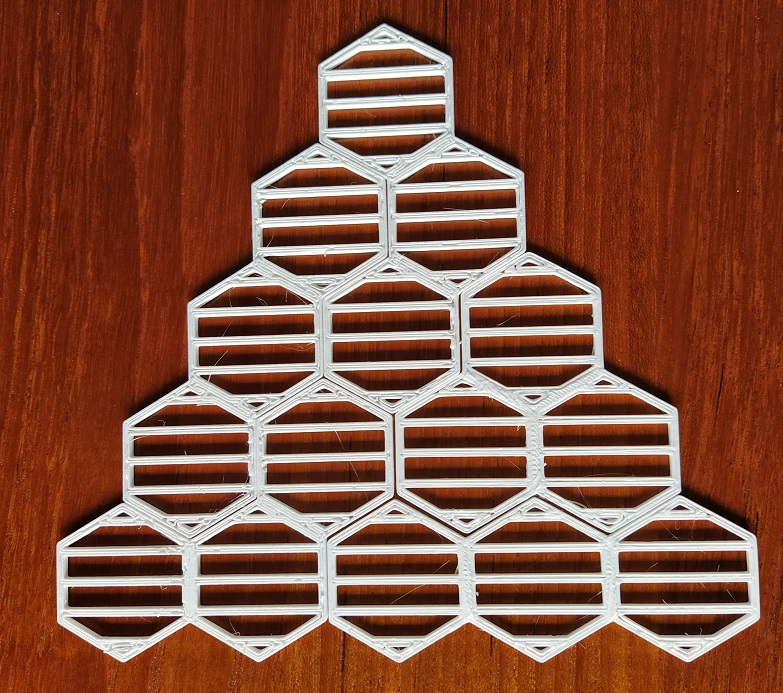

Another figure with triangle symmetry and three holes is also possible. Do you know which one?
Let's have a look at the pieces and the triangle shown by the computer.
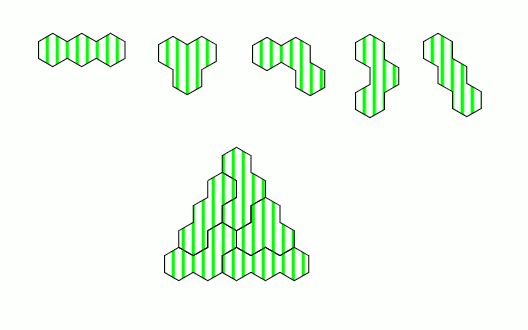
The stripes are orthogonal to the stripes of the real pieces, but that doesn't matter. On the other side there are figures without triangle symmetry, where the direction of the stripes matters, if their directions differ by 60°. Stripes with an angle of 30° to the long sides of parallelogram are possible, but you can't get a solution with stripes orthogonal to these lines. Stripes parallel to the symmetry axis of the pentagonal figure aren't possible either.
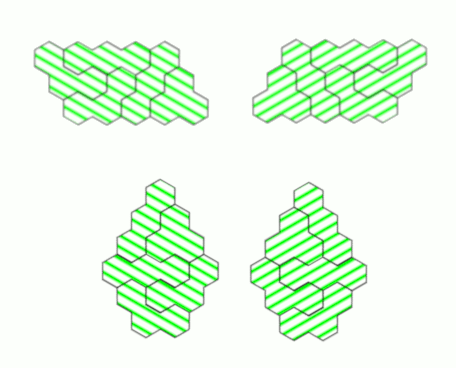
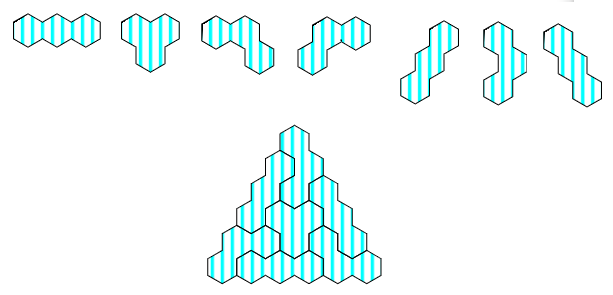
You can also construct some other figures with an axis of symmetry or a convex pentagonal structure. It's not strictly convex, but if you take the centers of all hexagons and determine their convex hull, it's completely inside the figure. We have no problem with different directions of the stripes, because for each shape there are three or only one striped version.

In the pentagonal structure, shown below, the hole can be placed at every inner position but not at any positions of the border.

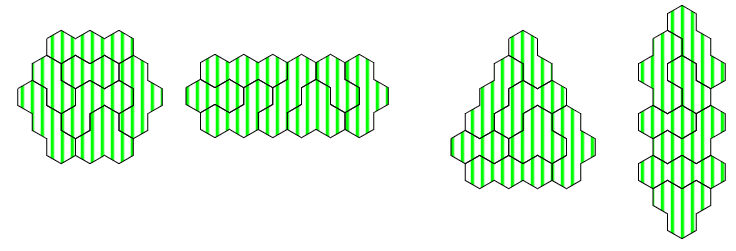
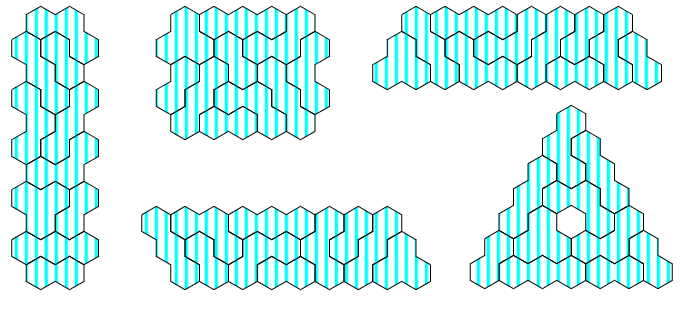 >
>


A construction with a vertical axis of symmetry has an even number of hexagons, which centers are on the axis. All their rows have an odd number of hexagon but in total the number is even. The total number for the other rows is also even. Therefore the number of hexagons in all odd rows can't be odd. But if the stripes aren't parallel or orthogonal to the stripes some symmetric figures are possible.
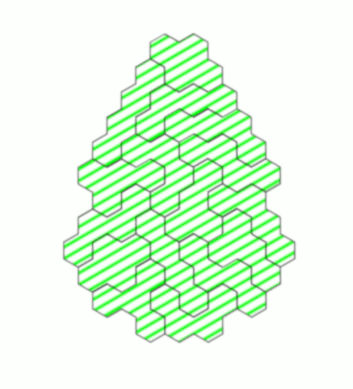
I also looked for a kind of convex polygons.
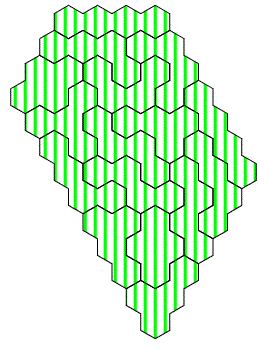
One direction of the stripes isn't possible as the folllowing numbering shows.
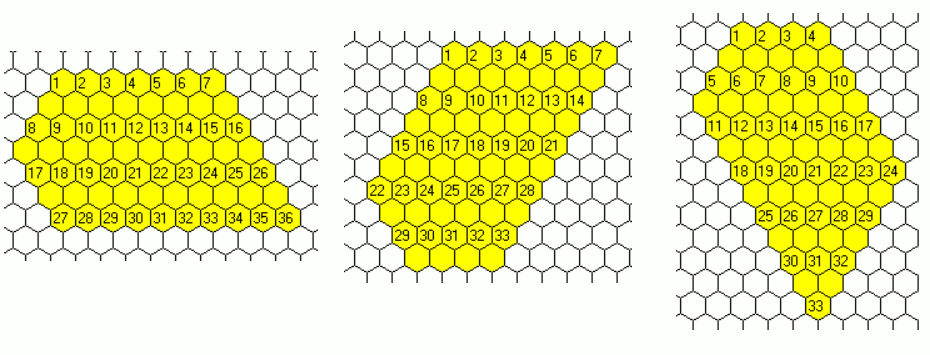
For another convex figure the direction of the stripes also matters. Instead of turning the figures numbering of the rows orthogonal to the stripes was used.


We can also get four congruent triangles of size 7 with an area of 28 hexagons.

If we turn two of the four triangles by 180° we can join these triangles to get parallelograms of size 16x7 or 8x14 with different directions of the stripes.

At last I made two congruent trapezia with three directions of the stripes. They can also be combined to get a 16x7 parallelogram. Three constructions are actually unnecessary, because there are one or three pieces for each shape in the one-sideded set. These pieces can be exchanged to transfer one construction into another one.
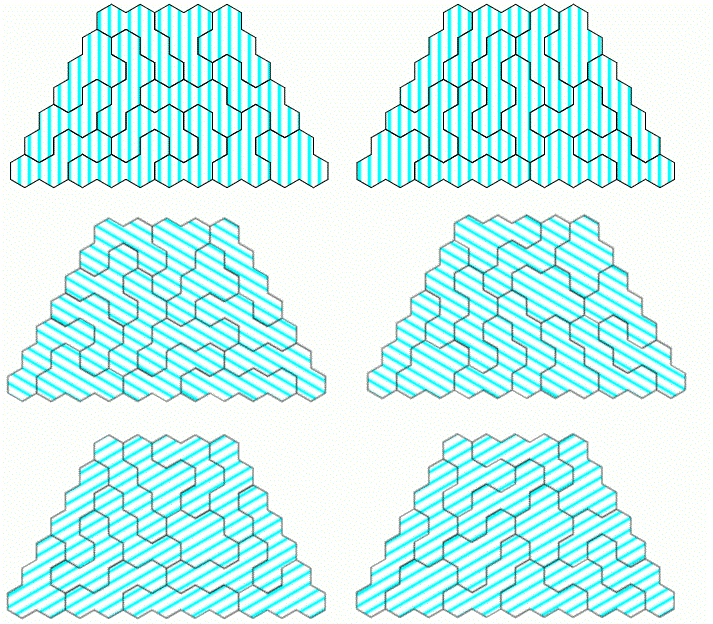
Since a*b + (a-1)(b+1) = 112 has some integer solutions I tried to construct kind of jagged rectangles with the set.
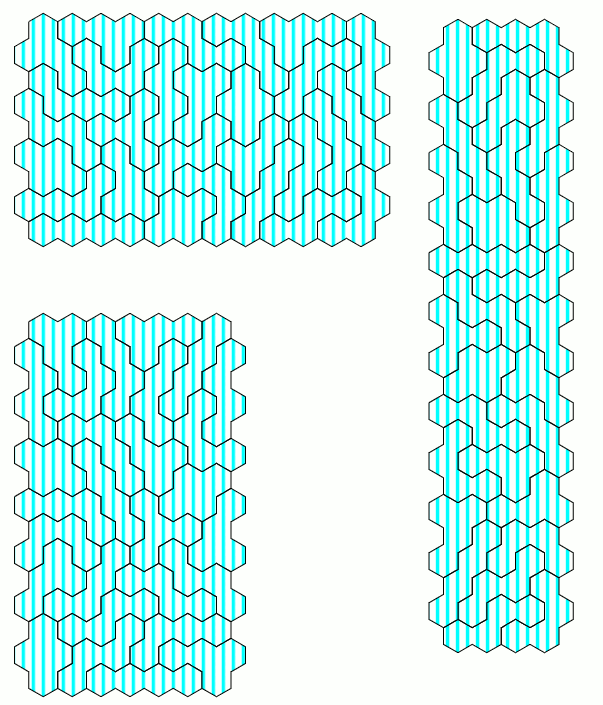
Two axes of symmetry are also given at the following holey figures.
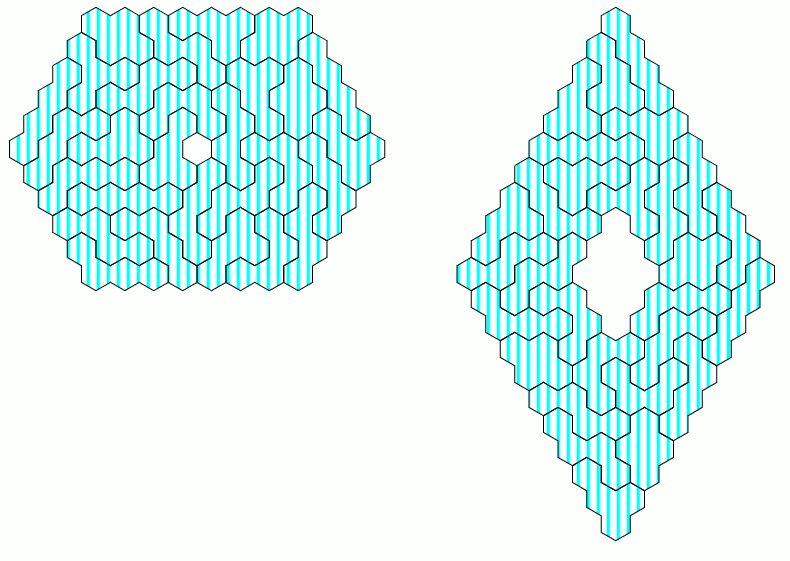
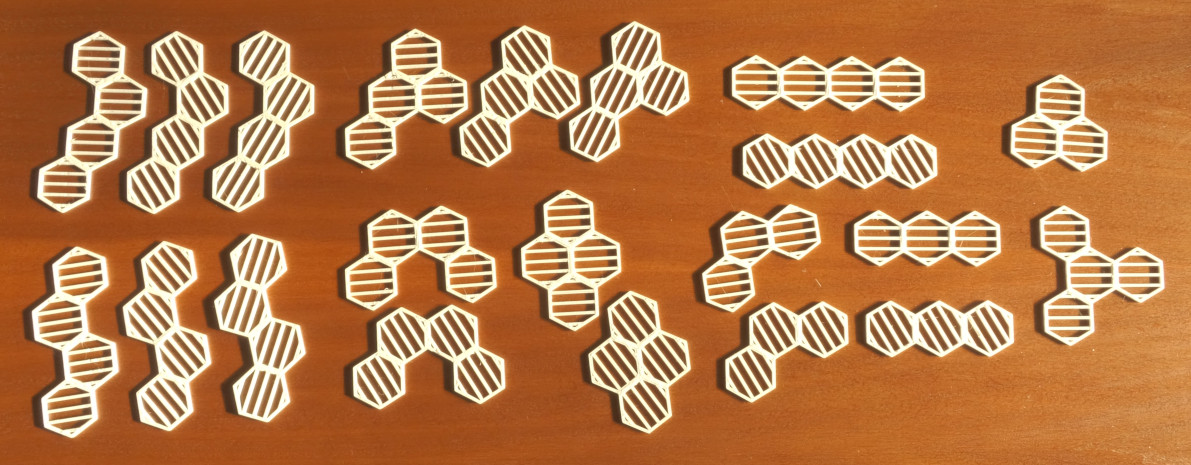
I printed this set with a total of 79 hexagons, because 79 = 1 + 6*13 = 1 + 3*26. Therefore figures symmetric under 60° or 120° rotation would be nice. One solution with real pieces is given on the title page.
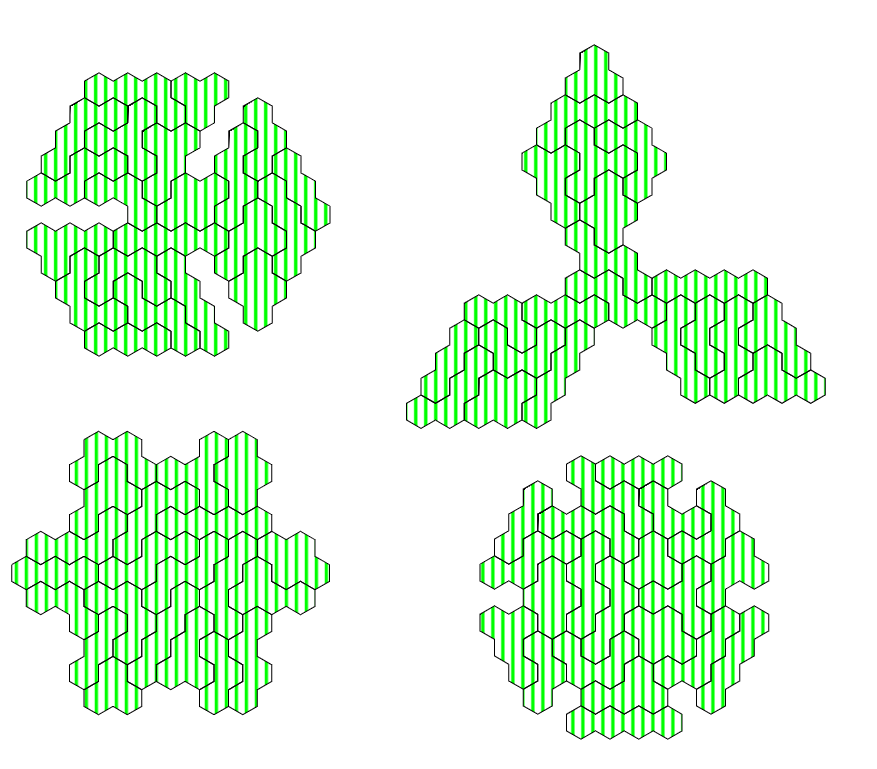
Some kind of hexagons are also possible.
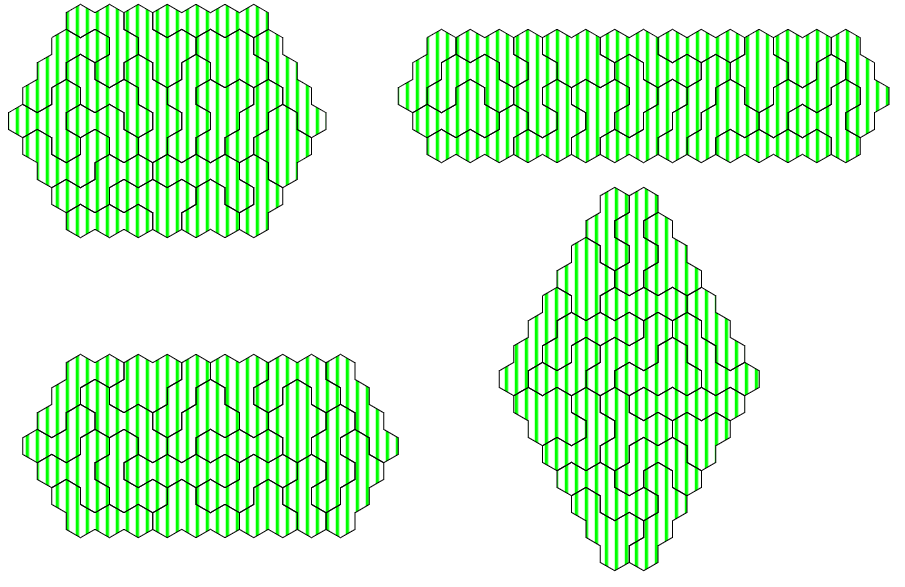
The almost rhomb is also shown with the real pieces.
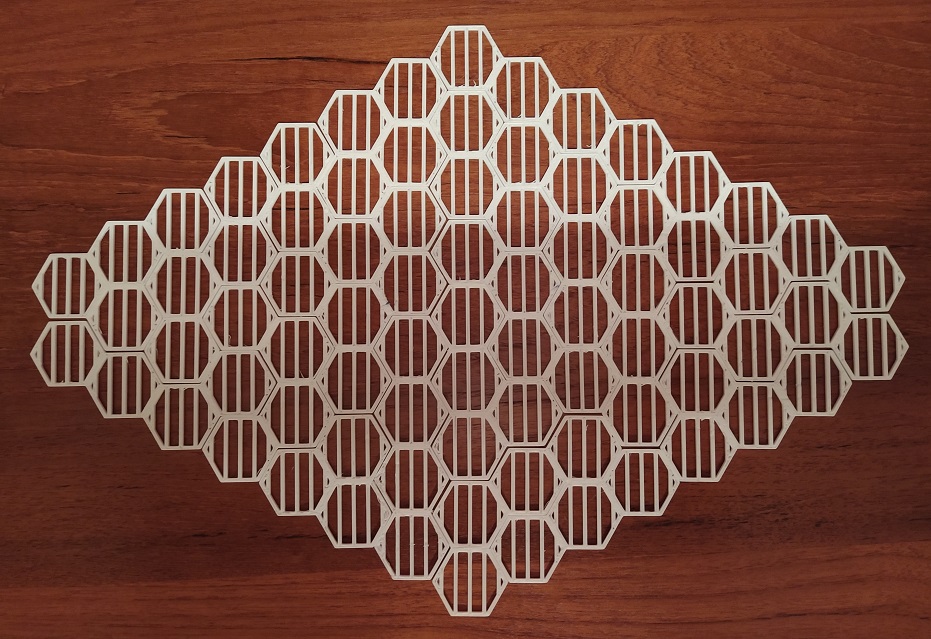
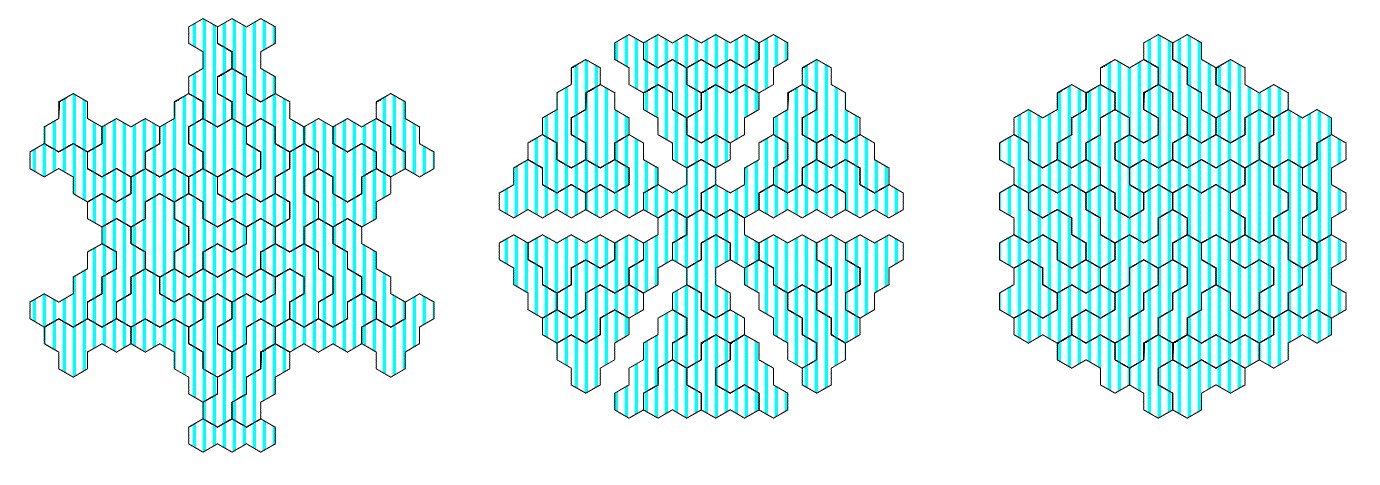
Symmetric pentagonal and hexagonal convex structures are also possible.
